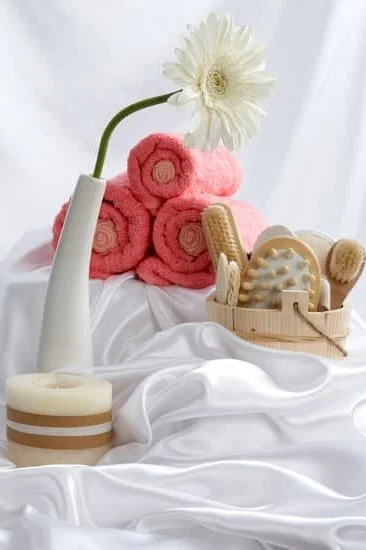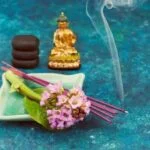Aromatherapy essential oils have become widely popular for their therapeutic and aromatic benefits. People use these oils for a variety of reasons, including relaxation, stress relief, and even to alleviate certain health conditions. But can you add aromatherapy essential oils to other products, such as lotions and carrier oils? In this article, we will explore the basics of aromatherapy essential oils and the possibilities of incorporating them into different products for various purposes.
Aromatherapy essential oils are highly concentrated plant extracts that are derived from different parts of plants, including flowers, leaves, and roots. These potent oils are known for their distinct fragrances and therapeutic properties. They have been used for centuries in traditional medicine and beauty practices due to their natural healing abilities.
Understanding the different types of aromatherapy essential oils is crucial for knowing how to use them effectively. Each oil has its own unique scent and therapeutic benefits, making it important to choose the right oil for your specific needs. From calming lavender to invigorating peppermint, there is a wide range of essential oils available, each with its own set of properties and uses.
The benefits of aromatherapy essential oils extend beyond just their pleasant aroma. These powerful oils have been known to promote relaxation, reduce stress, improve mood, and even provide relief from certain physical ailments. When used properly, they can have a positive impact on both mental and physical well-being. Understanding how to use aromatherapy essential oils safely is key to reaping their full benefits.
Understanding the Different Types of Aromatherapy Essential Oils
Aromatherapy essential oils come in a wide variety of types, each with its own unique properties and benefits. Some of the most popular types include lavender, peppermint, eucalyptus, tea tree, and lemon essential oils. Each type of oil has its own distinct aroma and therapeutic effects, making them suitable for different purposes.
Lavender essential oil is known for its calming and relaxing effects, making it ideal for reducing stress and promoting better sleep. Peppermint essential oil has a refreshing and invigorating scent that can help to increase energy levels and ease headaches. Eucalyptus essential oil is commonly used for respiratory issues due to its decongestant properties.
Tea tree essential oil is prized for its antiseptic and anti-inflammatory qualities, making it a popular choice for treating skin conditions. Finally, lemon essential oil has a fresh and uplifting fragrance that can help to improve mood and boost concentration.
When it comes to incorporating aromatherapy essential oils into your daily routine, there are various ways to do so. They can be used in diffusers to create a pleasant ambiance at home or work, added to bathwater for a soothing soak, or applied topically when diluted with a carrier oil. Additionally, these oils can also be mixed with other products such as lotions or carrier oils to enhance their benefits.
Here’s an example of how you can add aromatherapy essential oils to other products:
| Aromatherapy Essential Oil | Other Product |
|---|---|
| Lavender | Unscented lotion for a calming moisturizer |
| Peppermint | Massage oil for an invigorating experience |
| Eucalyptus | Shampoo or shower gel for respiratory support during showers |
The Benefits of Aromatherapy Essential Oils
Aromatherapy essential oils are known for their various benefits, both for the body and the mind. These powerful oils can be used in a variety of ways to promote health and overall well-being.
Some of the most common benefits of aromatherapy essential oils include stress relief, improved sleep, relaxation, and even pain management. As these oils enter the body through inhalation or topical application, they can have a direct impact on the nervous system, promoting a sense of calm and balance.
In addition to their emotional and mental benefits, aromatherapy essential oils also offer physical advantages. Many essential oils possess antibacterial, antiviral, and anti-inflammatory properties that can help boost the immune system and support overall health. For example, tea tree oil is known for its antibacterial properties, while lavender oil is often used for its calming effects.
Moreover, aromatherapy essential oils can also be used to enhance skincare routines. Many essential oils are known for their moisturizing and anti-aging properties when applied topically. From reducing inflammation to promoting cell regeneration, these potent oils can be a wonderful addition to anyone’s beauty regimen.
When considering the different types of aromatherapy essential oils available, it’s important to keep in mind that each oil has its own unique set of benefits and uses. By understanding the specific properties of each oil, individuals
How to Use Aromatherapy Essential Oils
Aromatherapy essential oils are incredibly versatile and can be used in a variety of ways to promote relaxation, improve mood, and even alleviate certain physical symptoms. In this section, we will explore the different methods for using these oils, as well as some important considerations to keep in mind.
Diffusion
One of the most popular ways to use aromatherapy essential oils is through diffusion. This involves using a diffuser to disperse the oil molecules into the air, allowing you to inhale the aroma and experience its therapeutic effects. There are several types of diffusers available, including ultrasonic diffusers, nebulizing diffusers, and reed diffusers, each with its own unique way of dispersing the oils.
Topical Application
Aromatherapy essential oils can also be applied directly to the skin when diluted with a carrier oil. This method allows for the oils to be absorbed through the skin and enter the bloodstream, providing targeted relief for various ailments such as headaches or muscle tension. However, it is important to always perform a patch test before applying any essential oil topically to ensure that you do not have an adverse reaction.
Inhalation
Inhalation of aromatherapy essential oils can also be done by adding a few drops of oil to hot water and inhaling the steam, or by simply inhaling the scent directly from the bottle. This method allows for quick and direct access to the benefits of the oil, making it especially useful for respiratory issues or emotional support.
When using aromatherapy essential oils with other products such as lotions or carrier oils for topical application, it’s important to ensure that they are safe for combined use. Always consult reliable sources before mixing oils together and do a small patch test on your skin before applying liberally. Additionally, some essential oils may react negatively with certain medications or medical conditions, so it’s crucial to consult with a healthcare professional if you have any concerns about potential interactions.
Can You Mix Aromatherapy Essential Oils With Other Oils or Lotions?
Aromatherapy essential oils are versatile and can be mixed with other oils or lotions to create personalized blends for various purposes. Whether you want to create a relaxing massage oil, a soothing bath blend, or a nourishing skincare product, adding aromatherapy essential oils to other products can enhance their benefits and provide a customized aromatherapy experience.
Benefits of Mixing Aromatherapy Essential Oils
When you add aromatherapy essential oils to carrier oils, such as coconut oil, jojoba oil, or sweet almond oil, you can tailor the blend to address specific wellness needs. For example, combining lavender essential oil with a carrier oil creates a calming massage blend that promotes relaxation and alleviates stress. Additionally, mixing essential oils with unscented lotions allows you to enjoy the therapeutic benefits of aromatherapy while moisturizing your skin.
Precautions When Mixing Aromatherapy Essential Oils
While blending aromatherapy essential oils with other products can be beneficial, it is important to exercise caution and adhere to safety measures. Essential oils are highly concentrated and potent, so they should always be diluted properly before being applied to the skin.
It is crucial to perform a patch test before using any new blend to ensure that it does not cause any adverse reactions. Furthermore, some essential oils are not safe for certain individuals, such as pregnant women or those with specific health conditions, so it is important to consult a qualified aromatherapist before blending essential oils with other products.
Popular Aromatherapy Essential Oil Blends
There are countless popular blends of aromatherapy essential oils that <can you add aromatherapy essential oils to other> products. Some common combinations include citrusy blends for energizing effects, floral blends for relaxation and stress relief, and woody blends for grounding and balance. Experimenting with different combinations of essential oils and carriers allows you to discover unique scent profiles and therapeutic properties that suit your preferences and needs.
Precautions and Safety Measures When Using Aromatherapy Essential Oils With Other Products
Aromatherapy essential oils have gained popularity for their various benefits, including relaxation, stress relief, and potential health benefits. Many people enjoy using these oils in combination with other products to enhance their effects. However, it is important to take precautions and safety measures when combining aromatherapy essential oils with other products to avoid any adverse reactions or negative outcomes.
When using essential oils with other products, it is important to consider the potential interactions between the different ingredients. Some essential oils may react negatively with certain lotions or carrier oils, leading to skin irritations or allergic reactions. To ensure safety when combining aromatherapy essential oils with other products, consider the following precautions:
- Perform a patch test before using any new combination of essential oils and other products on a larger area of the body.
- Research and understand the properties and potential interactions of each essential oil before blending it with other products.
- Use only high-quality, pure essential oils from reputable sources to reduce the risk of contamination or impurities affecting the final blend.
Additionally, certain populations such as pregnant women, children, and individuals with specific medical conditions should exercise extra caution when using aromatherapy essential oils in combination with other products. Consulting a healthcare professional or an experienced aromatherapist can provide valuable guidance on safe usage for these groups.
Creating your own blends of aromatherapy essential oils with other products can be a fun and rewarding experience. However, it’s crucial to prioritize safety and take necessary precautions to prevent any negative effects on your health. By following these guidelines, you can enjoy the benefits of combined aromatherapy essential oil blends without compromising your well-being.
- Properly dilute essential oils according to recommended guidelines before mixing them with lotions or carrier oils.
- Avoid exposing blended products containing essential oils to direct sunlight or heat, as this can affect their stability and potency.
- When in doubt about whether an essential oil can be safely combined with a specific product, seek advice from professionals in the field.
Popular Aromatherapy Essential Oil Blends
Many people use aromatherapy essential oils to create custom blends that suit their individual needs and preferences. The versatility of essential oils allows for endless combinations, making it easy to find a blend that works best for you. Popular aromatherapy essential oil blends are often used for specific purposes such as relaxation, energizing, or promoting mental clarity.
One popular blend is the “Calming Lavender” which combines lavender, chamomile, and frankincense essential oils. This blend is often used in diffusers or added to carrier oils for a calming massage. Another popular blend is the “Energizing Citrus” which includes lemon, orange, and grapefruit essential oils. This uplifting blend can help promote energy and focus when used in a diffuser or added to natural lotions.
When creating your own blends with aromatherapy essential oils, it’s important to consider the properties of each oil and how they will work together. Some essential oils complement each other well, while others may not mix as effectively. Understanding the benefits and uses of different essential oils can help you create the perfect blend for your needs.
| Blend | Purpose |
|---|---|
| Calming Lavender (lavender, chamomile, frankincense) | Promotes relaxation and stress relief |
| Energizing Citrus (lemon, orange, grapefruit) | Uplifts mood and boosts energy levels |
DIY Aromatherapy Essential Oil Recipes for Mixing With Other Products
In conclusion, aromatherapy essential oils are a versatile and beneficial addition to any wellness routine. Whether diffused, applied topically, or used in DIY recipes, these oils have been shown to support physical and emotional well-being. However, it is important to understand the basics of aromatherapy essential oils, as well as the different types available in order to maximize their benefits.
One common question that arises is whether aromatherapy essential oils can be mixed with other products. The answer is yes, you can add aromatherapy essential oils to other carrier oils, lotions, or even household cleaners to create personalized blends for various uses. This allows individuals to tailor their aromatherapy experience based on their needs and preferences.
When incorporating aromatherapy essential oils into other products, it is crucial to take precautions and follow safety measures to ensure proper usage. Understanding the proper dilution ratios and potential interactions with other substances is key to using these oils effectively and safely. By doing so, individuals can enjoy the benefits of aromatherapy essential oils while minimizing any potential risks.
Frequently Asked Questions
What Essential Oils Can You Not Mix Together?
Some essential oils should not be mixed together due to their chemical composition or potential interactions. For example, citrus oils like lemon or grapefruit should not be combined with cedarwood or eucalyptus.
Can You Mix Aromatherapy Oils?
Aromatherapy oils can be mixed to create custom blends that cater to specific needs or preferences. However, it is important to research the properties and potential interactions of each oil before mixing them together.
Can You Use Too Many Essential Oils at Once?
Using too many essential oils at once can potentially overwhelm the senses and dilute the therapeutic effects of each oil. It’s generally recommended to use a maximum of 3-4 essential oils in a blend for best results and safety.

Are you looking for a natural way to improve your health and wellbeing?
If so, aromatherapy may be the answer for you.






